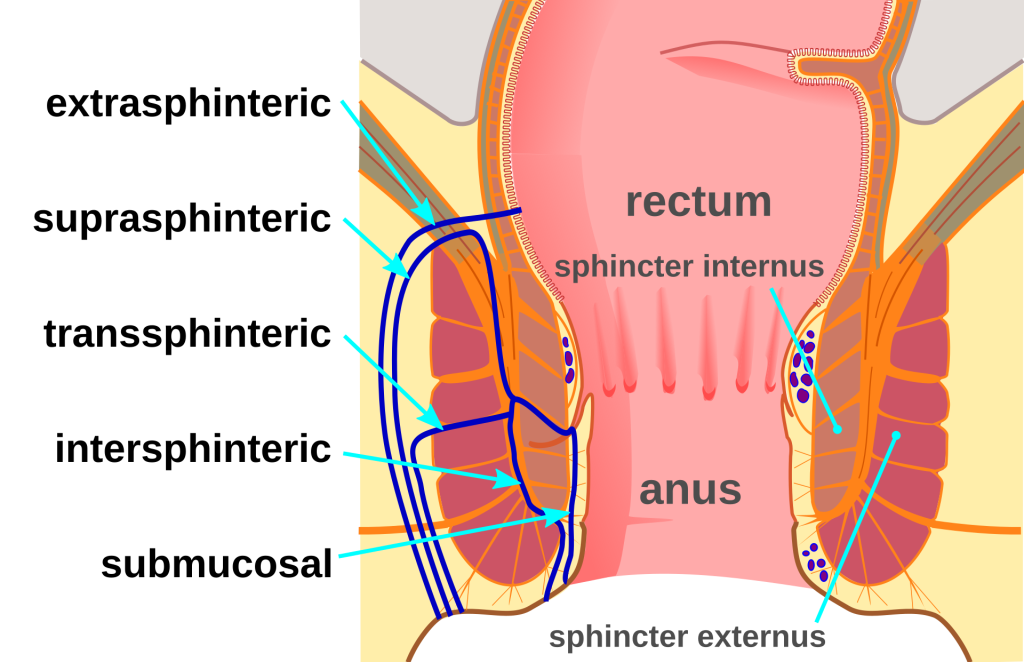Anal Fistula
An anal fistula is an infected tunnel that develops between the skin and the anus at the end of the digestive system, which is surrounded by muscles.
The majority of anal fistulas are caused by an infection that begins in the anal gland. The infection in the gland initially manifests as an abscess. The abscess either spontaneously ruptures or is surgically drained. The abscess then contracts and transforms into a fistula. A tunnel forms beneath the skin between the abscess draining hole and the infected anal gland.
Symptoms and Diagnosis
An anal fistula is characterized by anal discharge, pain, swelling, and the presence of an external opening (hole). The fistula is typically diagnosed through physical examination; the external opening and discharge are visible, and the fistula tract can be palpated. During surgery, a guide wire (stile) is inserted via the external opening, and methylene blue is used to confirm the tract.
In complex cases, fistulography, endoanal-endorectal ultrasonography, and MRI or CT (computed tomography) can be performed.
Classification
According to Parks’ classification, there are four primary types of anal fistula:
- Intersphincteric
- Transsphincteric
- Suprasphincteric
- Extrasphincteric
Treatment
In most cases, surgery is required to treat an anal fistula. The type of surgery depends on the location and complexity of the fistula. Along with the treatment, the other objectives of surgery are to prevent recurrence and preserve the sphincter muscles. Damage to these muscles (sphincters) can lead to fecal incontinence.

Image retrieved from Wikipedia on 19 April 2023 under Creative Commons Attribution-ShareAlike 4.0 International (CC BY-SA 4.0). By McortNGHH – Own work, Image’s Page.
« Return to Dictionary